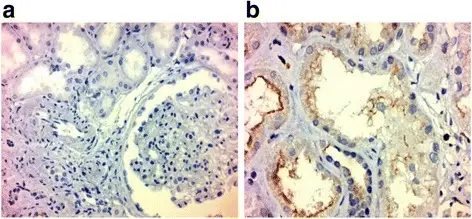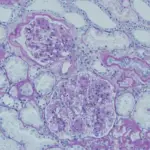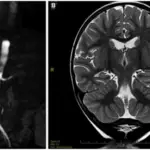Nephrosclerosis is a clinical syndrome categorized by long-term vital hypertension.
What is the Pathology of Nephrosclerosis?
The pathology of nephrosclerosis is:
-Etiology: The cause of nephrosclerosis is hypertensive condition.
-Genes involved: Unknown.
-Pathogenesis: The sequence of events that lead to nephrosclerosis is unclear.
-Morphology: Not applicable.
-Histology: The histology associated with nephrosclerosis shows wrinkling glomerular basement membranes and shrunken glomerular tufts.
How does Nephrosclerosis Present?
Patients with nephrosclerosis typically higher in females present at the age range of 45-65 years. The symptoms, features, and clinical findings associated with nephrosclerosis include, hypertensive retinal changes, proteinuria less than 0.5 g/d, encephalopathy, cardiovascular abnormalities, and renal failure.
How is Nephrosclerosis Diagnosed?
Nephrosclerosis is diagnosed through clinical presentation, lab works- Urinary albumin-to-creatinine ratio, serum potassium, calcium, blood glucose, lipid panel, urinalysis. Imaging studies such as echocardiogram assess left ventricular size, ultrasonography, electrocardiogram (ECG).
How is Nephrosclerosis Treated?
Nephrosclerosis is treated through management of hypertension.
What is the Prognosis of Nephrosclerosis?
The prognosis of nephrosclerosis is good with proper management of hypertension.



